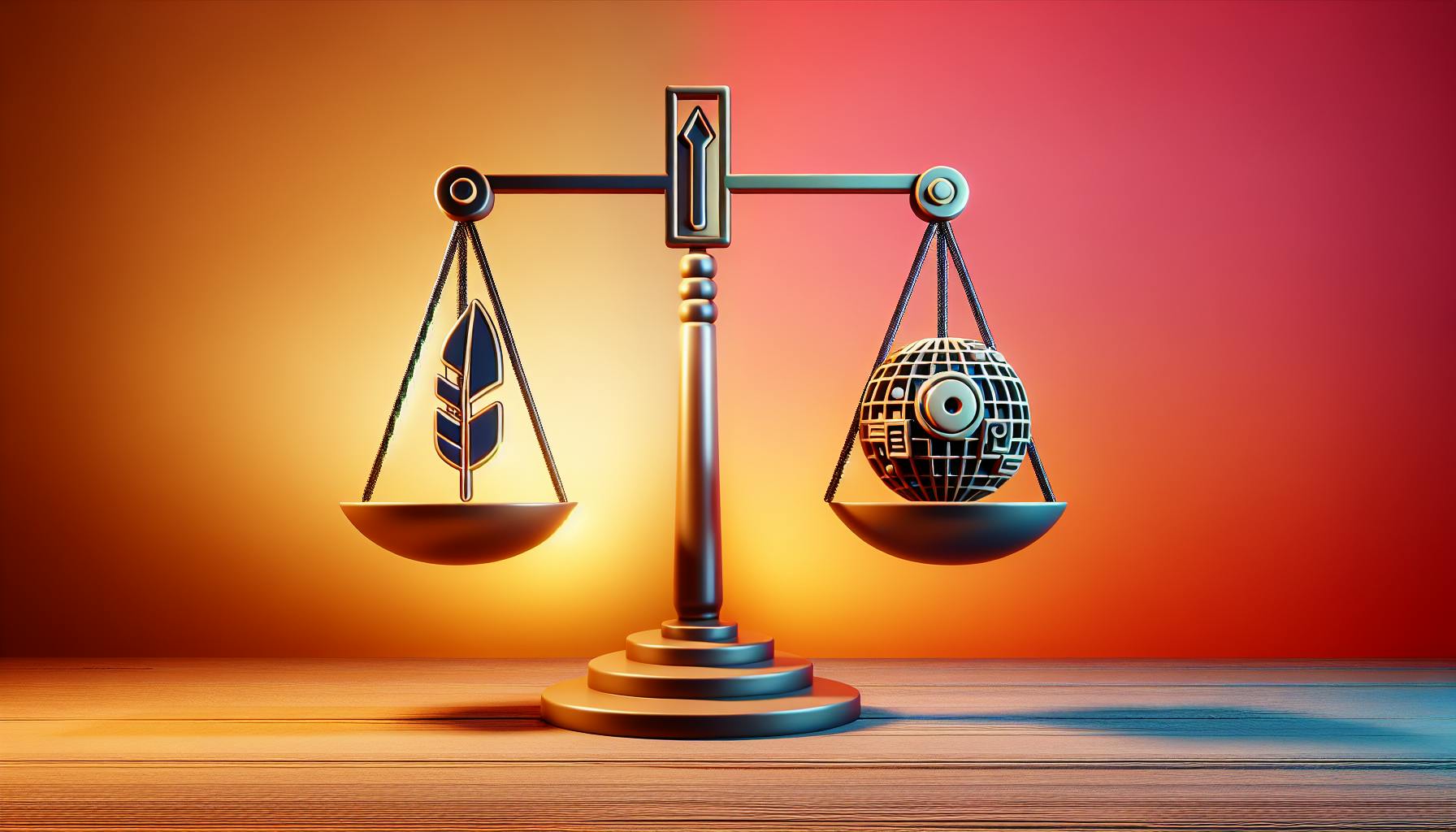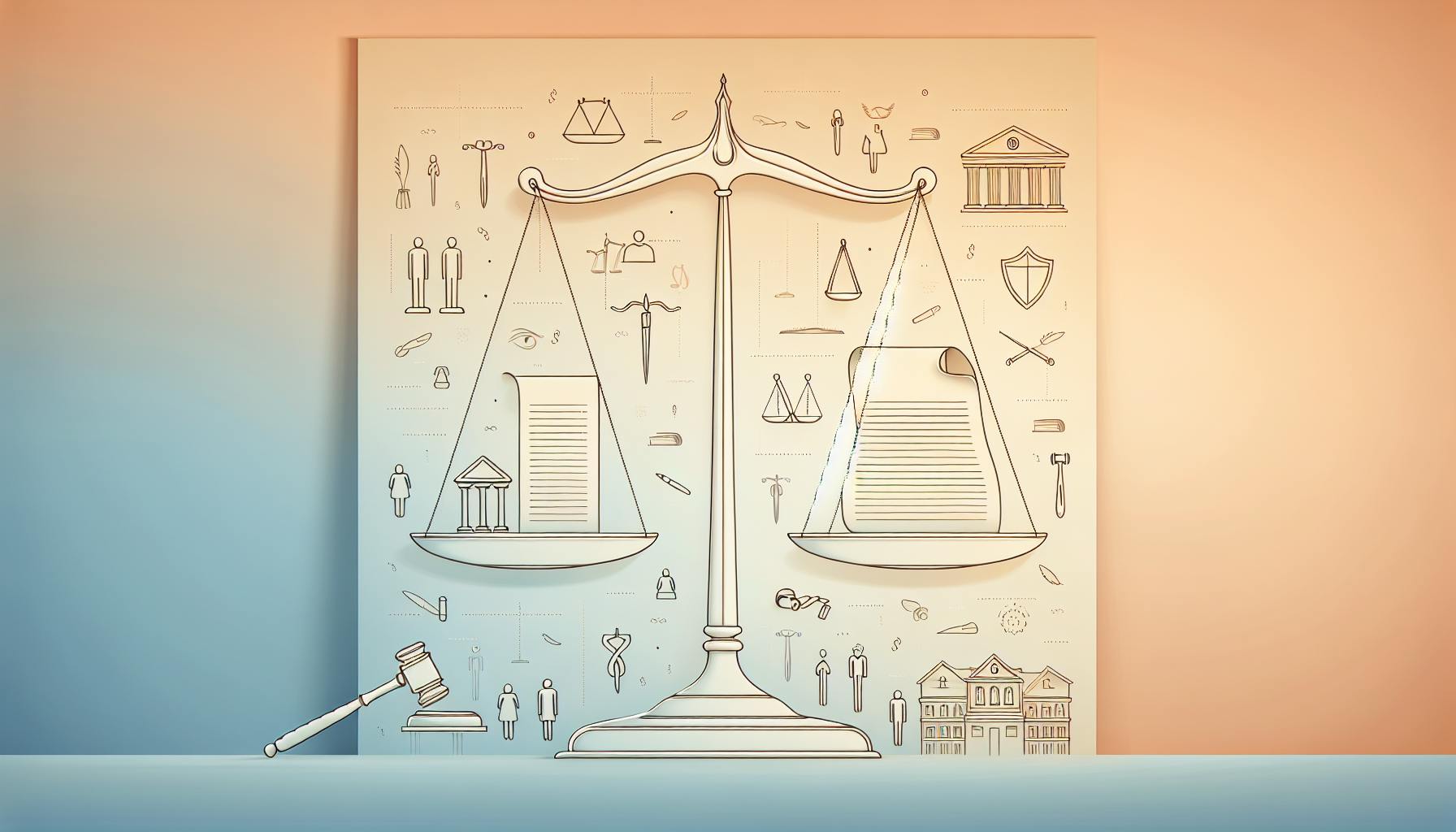We can all agree that legal documents like subpoenas and warrants can be confusing.
By clearly outlining the differences between subpoenas and warrants, this article will help you easily understand their purposes, scope, and processes.
You'll learn the exact definition, issuing authority, and legal standards behind subpoenas vs. warrants. You'll also discover the step-by-step procedures for acquiring and responding to these powerful legal tools for obtaining information.
Understanding Legal Documents for Obtaining Information
Introduction to Subpoenas and Warrants
A subpoena is a legal document issued by a court to compel someone to testify or produce evidence relevant to a legal proceeding. A warrant is a legal document issued by a judge that authorizes law enforcement to search a location or seize evidence.
Both subpoenas and warrants serve important roles in the legal system by allowing parties to obtain information and evidence related to a case. However, they function differently. Subpoenas request information, while warrants grant permission to obtain it.
Legal Authority Behind Subpoenas and Warrants
Subpoenas are issued under the authority of the court hearing a case. They can be used in both civil and criminal proceedings. The party requesting a subpoena must convince the judge that the information sought is relevant and necessary to the case.
Warrants are issued by judges upon a showing of probable cause by law enforcement. Probable cause means there is reasonable evidence to believe criminal activity is occurring or evidence of a crime exists in the place to be searched. Judges must find probable cause exists before approving a warrant.
Scope of Information Obtainable
The scope of information obtainable depends on whether it is a subpoena or warrant.
Subpoenas typically request documents, testimony, or tangible evidence relevant to the case. They can be narrowly tailored to specific information or broader in scope depending on the case needs.
Search warrants allow law enforcement to enter and search specified locations and seize evidence in accordance with the warrant's terms. Warrants usually describe the specific places to be searched and items to be seized based on the probable cause evidence presented.
In summary, subpoenas request information while warrants grant direct access to obtain it within court-approved limits. Understanding these key differences is important when seeking information for legal matters.
Is a subpoena the same as a warrant?
No, a subpoena and a warrant are not the same. They are different legal documents used for obtaining information in different contexts:
Key Differences
-
Purpose: A subpoena orders a person or entity to testify, provide documentation, or both. A warrant authorizes law enforcement to search premises and seize evidence related to a crime.
-
Issuing Authority: Subpoenas are issued by courts or attorneys working on a legal case. Warrants are issued by judges or magistrates.
-
Legal Basis: Subpoenas have a civil legal basis and relate to lawsuits or investigations. Warrants have a criminal legal basis tied to probable cause of illegal activity.
-
Refusal: While risky, one can legally object or quash a subpoena under certain grounds. Refusing a warrant constitutes obstruction of justice.
-
Scope: Subpoenas request specific testimony or documents. Warrants allow broader searches and evidence seizures within predefined limits.
In summary, subpoenas and warrants serve different legal functions under different authorities. Subpoenas request information while warrants authorize evidence searches and seizures. Understanding these key differences is important for legal professionals.
Does subpoena mean to give evidence?
A subpoena is a legal document issued by a court that compels a person or entity to provide testimony or produce documents and other evidence relevant to a legal proceeding. Here are some key points about subpoenas:
-
A subpoena requires the recipient to appear at a specific time and place to give testimony or provide requested evidence. Failure to comply can result in being held in contempt of court.
-
There are two main types of subpoenas:
- Trial subpoenas require testimony at a trial or hearing.
- Deposition subpoenas require testimony at a deposition (recorded out-of-court testimony).
-
Subpoenas can also require the production of documents, recordings, or other tangible evidence relevant to the case.
-
The party issuing the subpoena must properly serve it on the recipient within a reasonable time frame. Proper service requirements vary based on jurisdiction.
-
There are limits on subpoena power. For example, a subpoena cannot require privileged information or place an undue burden on the recipient.
So in summary, yes, being subpoenaed generally means you are legally required to appear and give evidence in a court case or legal proceeding. The subpoena spells out what testimony or documents are required. Failure to comply can potentially result in court-imposed fines or penalties.
What 4 pieces of information must be contained in a valid search warrant?
A valid search warrant must contain the following 4 critical pieces of information:
-
Probable cause - This establishes reasonable grounds for conducting the search based on facts and evidence presented. The affidavit must convince the judge there is probable cause that evidence of a crime may be found in the place to be searched.
-
Oath or affirmation - The officer requesting the warrant must make a sworn statement that the facts and circumstances contained in the affidavit are true to the best of their knowledge. This ensures accountability.
-
Specific description of location - The place to be searched and items to be seized must be described with sufficient details to identify the exact area for the search and prevent general exploratory searches. Addresses, buildings, rooms, vehicles, storage spaces, etc. should be clearly identified.
-
List of items - The warrant must identify specific evidence being sought, ensuring the search is limited to only gathering relevant materials pertaining to the suspected crime under investigation. Broad descriptions should be avoided.
What is the difference between subpoena and subpoena duces tecum?
A subpoena is a court order that compels a witness to appear in court on a specified date and time to testify or provide evidence relevant to a legal proceeding.
A subpoena duces tecum is a specific type of subpoena that not only requires a witness to appear, but also orders the witness to bring documents, records, or other tangible items that may be relevant evidence.
The key differences between a standard subpoena and subpoena duces tecum are:
-
Appearance: A standard subpoena orders a witness to physically appear in court. A subpoena duces tecum also requires the witness bring documents or items.
-
Scope: A standard subpoena applies only to a person's testimony. A subpoena duces tecum requires documents and items in addition to testimony.
-
Evidence: A standard subpoena compels testimony. A subpoena duces tecum compels both testimony and physical evidence.
In summary, while both are court orders requiring appearance, a subpoena duces tecum also specifies documentation and evidence that must be provided by the witness. Understanding the distinction can help legal teams utilize the correct type of subpoena during discovery or trial.
sbb-itb-e93bf99
Exploring the Key Differences Between Subpoenas and Warrants
Definition and Purpose of Subpoenas vs. Warrants
A subpoena is a legal document issued by a court or other government entity that compels the recipient to provide specific evidence or testify as a witness. Subpoenas are used in both civil and criminal cases to obtain documents, records, or witness testimony that is relevant to a legal proceeding or investigation.
In contrast, a warrant is a legal document issued by a judge that authorizes law enforcement to search a specific location and seize particular items as evidence. Warrants allow police to enter private property or access personal records during an investigation of a crime.
The key difference is that subpoenas request information, while warrants grant authority to obtain evidence. Subpoenas enable legal proceedings to acquire relevant documents or testimony, while warrants empower police searches to further a criminal investigation.
Issuing Authority for Subpoenas and Warrants
Subpoenas can be issued by courts, government agencies, legislative bodies, and attorneys working on a case. For example, civil subpoenas are issued by attorneys, whereas criminal subpoenas are issued by courts.
On the other hand, warrants can only be issued by a judge or magistrate. Law enforcement officials must demonstrate probable cause and request a judicial warrant from a court empowered to authorize and oversee criminal investigations.
So while subpoenas stem from diverse legal authorities, warrants strictly originate from judicial oversight of law enforcement actions.
Legal Standards for Issuance
The legal requirements for issuing a subpoena are less strict compared to a warrant. Subpoenas only need to show the requested information has relevance to an ongoing case or investigation. As long as the need is justified, most subpoenas are approved.
By contrast, warrants can only be approved if police demonstrate probable cause to believe that evidence of a crime will be discovered by searching the particular place or seizing the specific items outlined in the warrant request. This is a higher legal standard that requires presenting reasonable grounds indicating criminal activity or evidence.
As a result, the evidentiary standards make warrants more difficult to obtain than subpoenas. Subpoenas broadly gather information related to legal proceedings, while warrants strictly require probable cause connecting a location or items to a criminal investigation.
The Process of Obtaining a Subpoena
This section outlines the key steps involved in obtaining different types of subpoenas, including civil and criminal subpoenas, as well as the contexts in which they are used.
Procedure for Issuing a Civil Subpoena
A civil subpoena is used in civil lawsuits and other non-criminal legal proceedings to compel a witness to provide testimony or documentation. Here is an overview of the process to issue a civil subpoena:
-
The attorney files a praecipe asking the court clerk to issue a subpoena. This includes details on the case, the witness being subpoenaed, and the information being requested.
-
The court clerk reviews the praecipe and formally issues the subpoena if everything is in order.
-
The subpoena is then served on the witness by a process server, sheriff, or other authorized person. Proof of service documentation is provided.
-
The subpoena specifies a date, time, and location for the witness to appear to provide testimony or bring the requested documents.
-
If the witness fails to comply, the attorney can file a motion with the court to enforce the subpoena. Penalties like contempt of court may apply for non-compliance.
Mechanics of Issuing a Criminal Subpoena
Prosecutors follow a streamlined procedure to issue a subpoena in a criminal case:
-
The prosecutor prepares a subpoena directing a witness to appear in court or produce specified evidence.
-
The subpoena is simply signed and stamped by the court clerk or judge. No praecipe is needed.
-
The subpoena is then served on the witness by law enforcement. Return of service is documented.
-
If the recipient fails to comply, prosecutors can also file a motion to enforce the subpoena or pursue charges like contempt.
Understanding the Subpoena Duces Tecum
A subpoena duces tecum is a specific type of subpoena used to obtain documents, recordings, or other tangible evidence relevant to a case. Key aspects include:
-
It commands the witness to appear and bring the designated documents or materials.
-
The attorney must provide a detailed description of the evidence being requested.
-
Objections can be raised against overly broad or unduly burdensome requests.
-
As with other subpoenas, failure to comply may warrant legal penalties.
The Steps to Acquire a Judicial Warrant
Demonstrating Probable Cause for a Warrant
To obtain a warrant, law enforcement must demonstrate probable cause to a judge that evidence of a crime will be found in the place to be searched. This requires providing specific facts and circumstances that would lead a reasonable person to believe evidence exists justifying a search. The evidence threshold for probable cause is lower than beyond a reasonable doubt needed for a criminal conviction.
Drafting and Submitting a Warrant Application
Law enforcement seeking a warrant must draft an application identifying the location to be searched, the items sought, the owner or occupant of the property, and the law enforcement officer making the request. The application must provide a factual basis establishing probable cause through witness statements, surveillance, confidential informants, or other evidence. The completed application is submitted to a judge for review.
The Role of the Judge in Warrant Issuance
An independent judge reviews the warrant application to determine if probable cause exists based on the facts presented. The judge must find the application establishes a "fair probability" that evidence will be found before approving the warrant. If satisfied, the judge will issue a warrant authorizing the search within a reasonable timeframe. The judge acts as a neutral party protecting against unreasonable searches lacking adequate justification.
Responding to Subpoenas and Warrants
Subpoenas and warrants are legal documents that compel individuals or organizations to provide information relevant to an investigation or legal proceeding. Understanding how to properly respond is important to avoid penalties.
Compliance with Subpoenas: What You Need to Know
If you receive a subpoena, you are legally required to provide the requested information by the deadline stated. Specific requirements may include:
- Providing documents, electronic records, or physical evidence
- Appearing at a deposition to provide testimony
- Complying within the timeframe given, often 14 days or less
Failure to comply may result in contempt charges or fines. If full compliance is difficult, contact the issuing party to request an extension or modification.
Challenging a Subpoena: Motions and Defenses
If you believe a subpoena requests sensitive information unrelated to the case, is overly broad or unduly burdensome, you can file a motion to quash or modify it. Work with legal counsel to determine if grounds exist to challenge the subpoena based on:
- Privileged information: Attorney-client privilege, doctor-patient confidentiality
- Unreasonable scope or relevance: Requests exceed needs of case
- Improper service: Failure to properly serve subpoena
Other defenses are also possible depending on the circumstances.
Understanding Compliance with a Search Warrant
If law enforcement officers arrive with a search warrant, you generally must comply by allowing them to enter and search the premises as specified in the warrant. However, warrants are subject to certain constraints:
- Officers can only search areas and seize evidence listed
- Anyone present should not interfere with the search
- Observe and document any concerns about the search
Verbal consent is not required. Consult an attorney if you wish to legally oppose the search.
Legal Recourse Against Unlawful Warrants
If evidence suggests a search warrant was improperly issued or executed, possible recourses include:
- Motion to suppress evidence: Seek to exclude improperly obtained evidence
- Civil rights lawsuit: Sue for violations of Constitutional rights
- Complaints against officers: Report misconduct, procedural violations
Legal assistance is vital in pursuing these options. Thorough documentation also supports these efforts.
Real-World Applications of Subpoenas and Warrants
Civil Litigation: Subpoenas in Action
Subpoenas are frequently used in civil litigation to obtain documents and testimony from third parties relevant to a case. For example, in a product liability lawsuit over an allegedly defective product, the plaintiff's attorney may issue a subpoena to the product manufacturer requesting design documents, testing reports, and correspondence regarding complaints about the product.
The documents obtained via the subpoena can uncover critical evidence about when the manufacturer first became aware of the alleged defect, their internal discussions regarding addressing it, and how they responded to consumer complaints. This evidence can directly impact determinations of liability and damages.
Criminal Investigations: The Power of Warrants
Search warrants are extremely common in criminal investigations as a means for law enforcement to legally search property and seize evidence. For instance, during a fraud investigation, investigators can first gather sufficient probable cause evidence of financial statement manipulation and insider trading within a company.
They then submit an affidavit and draft warrant to a judge, requesting authorization to search company offices and computers for incriminating documents. The resulting warrant enables them to raid company headquarters, image hard drives, and confiscate reams of electronic communications and financial records fundamental to building their case.
The Intersection of Civil and Criminal Subpoenas
There can be overlap between civil and criminal cases where both types of subpoenas come into play. For example, in a wrongful death lawsuit where negligence is alleged, civil subpoenas may be used to obtain medical records, toxicology reports, and eyewitness statements.
If evidence arises indicating criminal negligence or manslaughter, the civil attorney may refer the case to prosecutors who then utilize criminal subpoenas to further access records and compel testimony from parties for presentation to a grand jury considering indictment. The fruits of the civil subpoena can aid the criminal investigation.
Conclusion: Navigating Subpoenas and Warrants in Legal Practice
Recap of Subpoenas and Warrants
- Subpoenas and warrants are legal documents used to obtain information in legal proceedings.
- Subpoenas request the production of documents, records, or testimony. They are issued in civil and criminal cases.
- Warrants authorize law enforcement to search premises and seize evidence. They require probable cause and are issued by a judge.
Best Practices for Handling Subpoenas and Warrants
- Consult with legal counsel when served with a subpoena or if law enforcement seeks a warrant.
- Fully comply with validly issued subpoenas and lawful warrants. Failure to comply may lead to contempt charges.
- Carefully review subpoenas for proper service, scope, and deadlines. Seek to modify overbroad or unduly burdensome subpoenas.
- Voluntarily provide information pursuant to a warrant, but do not obstruct lawful searches. Document any issues for later court review.


